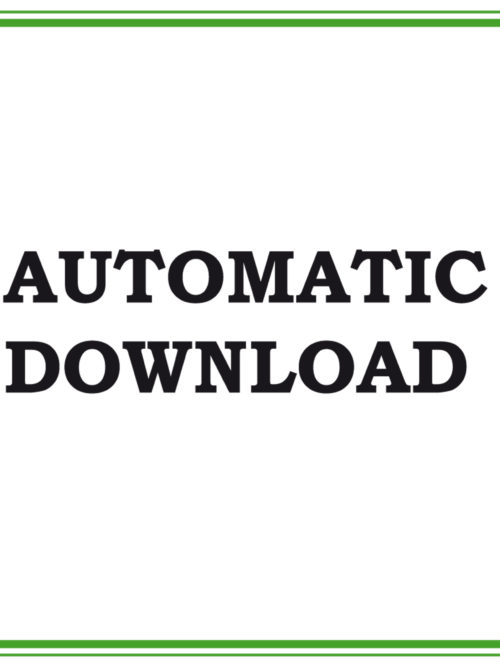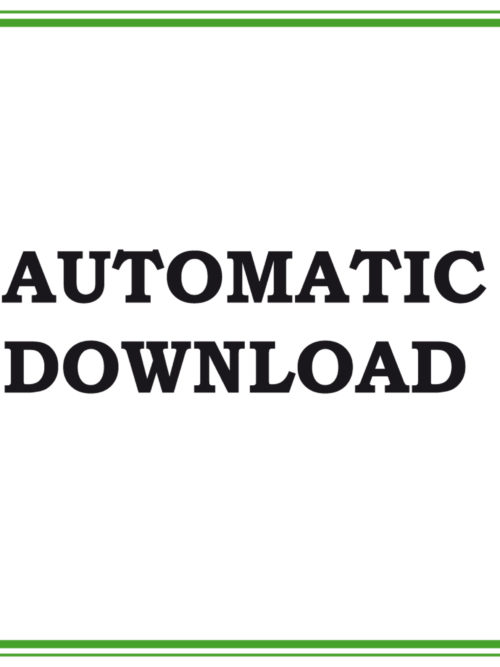-
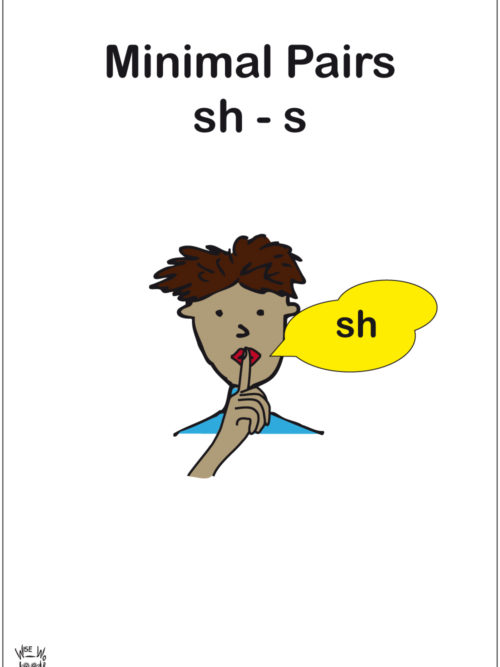 All Wise Words Programs are sent as a download unless otherwise specified. To ship a USB, please add either Australian (A$20) or International (A$55) shipping to shopping cart. Using Contrastive Pairs Although many children may progress quickly through a regular articulation program, some respond better using a phonological approach. This program uses the contrastive phonological approach of Minimal Pairs. The use of Minimal Pairs is supported by evidence-based practice and has been shown to be an effective and efficient treatment for contrasting vowels or consonants. Once the ‘sh’ sound has been established in single, meaningful words, this program can be used. Working through this program will help your child hear and use the sound correctly to affect a change in meaning. Although your child is generally able to identify your ‘sh’ vs ‘s’ productions, he may use the error sound ‘s’ for any ‘sh’ words. e.g. He may say … ‘Sue’ when he means to say ‘shoe’ ‘wassing’ when he means to say ‘washing’ ‘fiss’ when he means to say ‘fish’ As he says the words, he may not recognise that he is using an incorrect sound. These sound errors can affect his intelligibility and will change the meaning in his connected speech.
All Wise Words Programs are sent as a download unless otherwise specified. To ship a USB, please add either Australian (A$20) or International (A$55) shipping to shopping cart. Using Contrastive Pairs Although many children may progress quickly through a regular articulation program, some respond better using a phonological approach. This program uses the contrastive phonological approach of Minimal Pairs. The use of Minimal Pairs is supported by evidence-based practice and has been shown to be an effective and efficient treatment for contrasting vowels or consonants. Once the ‘sh’ sound has been established in single, meaningful words, this program can be used. Working through this program will help your child hear and use the sound correctly to affect a change in meaning. Although your child is generally able to identify your ‘sh’ vs ‘s’ productions, he may use the error sound ‘s’ for any ‘sh’ words. e.g. He may say … ‘Sue’ when he means to say ‘shoe’ ‘wassing’ when he means to say ‘washing’ ‘fiss’ when he means to say ‘fish’ As he says the words, he may not recognise that he is using an incorrect sound. These sound errors can affect his intelligibility and will change the meaning in his connected speech. -
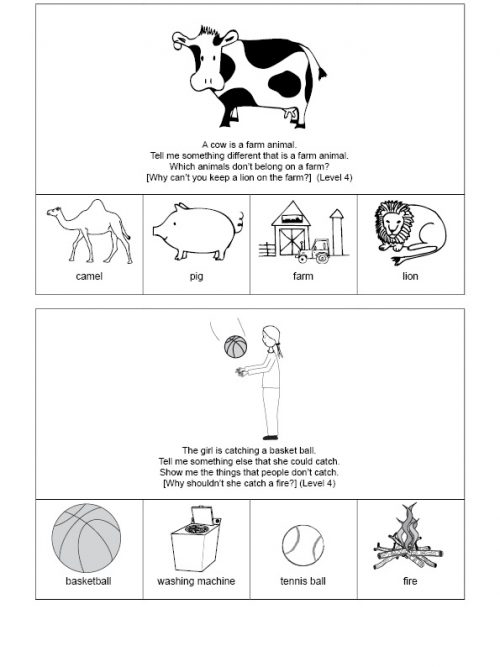
Level 3 (& Level 4)
Selecting an Object or Set of Objects by Exclusion Level 3 “Tell me something else that ...” “Tell me something different that ..." "Show me the things that aren’t ...” “Point to the things that don’t ...” “Find the things that the boy can’t ...” Reasoning & Problem Solving Level 4 “Why is a ... made of ...?" "What should he do if ...?" "Why wouldn't ...?" "What could you use to ...?" "What could you ... if ...?" This program targets Level 3 questions and statements. At this level of understanding, your child will need to look beyond the material in front of him. He will be required to evaluate and reorder the information. A typical skill in this category is the ability to exclude material. Your child will need to follow directions which may use the words ‘not, don’t, can’t, something else, other than’. The activities in this program have been designed specifically to help your child recognise alternatives. A number of Level 4 questions have been included in this program. These tasks will prove useful for those children who are working towards a more abstract type of question. Questions at this level include Why should ...? Why shouldn’t ...? Why can ...? Why can’t ...? What could ...? How can we tell ...? At this level of understanding, your child will need to look beyond the material in front of him/her and will then be required to evaluate and reorder the information. A typical skill in this category is the ability to exclude material. Your child will need to follow directions which may include the words ‘not, don’t, can’t, something else, other than’. The activities in this program have been designed specifically to help your child recognise alternatives. Example of a Level 3 Activity 1. “A cow is a farm animal. “Tell me something different that is a farm animal.” Your child is given the following possible answers: A camel - An animal but not a farm animal. A pig - The correct answer. This is an alternative farm animal. A farm - The place where farm animals are found. A lion - An animal but not a farm animal. 2. “Which animals don’t belong on the farm?” - “Camel, lion” Example of a Level 4 Activity 1.“Mum fills the kettle with water. How can we tell that the kettle is boiling?" 2. “Frogs can jump. Why can’t snails jump? -
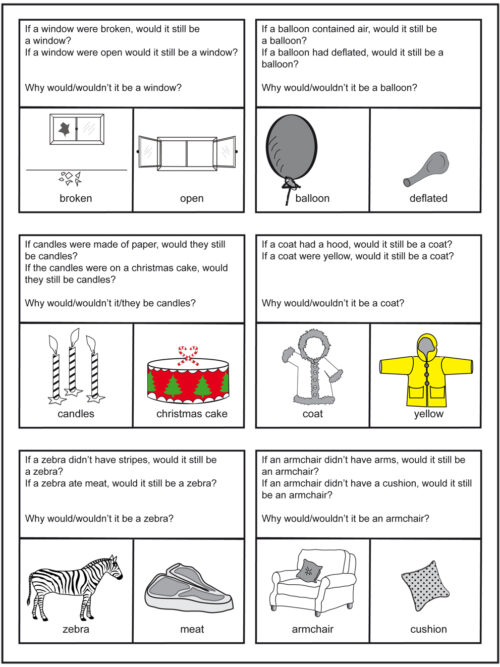
Level 4
Justifying a Decision Based on Characteristics
This program is underpinned by Marion Blank’s Model of Classroom Language. The activities presented in this program involve more complex verbal ideas and are based on Blank’s model. For your child to be able to succeed with these tasks, he will need to extend beyond what can be immediately seen or perceived. He will need to reason and make decisions based on the attributes of objects, considering possibilities which may not be immediately obvious, reflecting on previous experiences and information. He will be required to use this information to reason and respond.
-
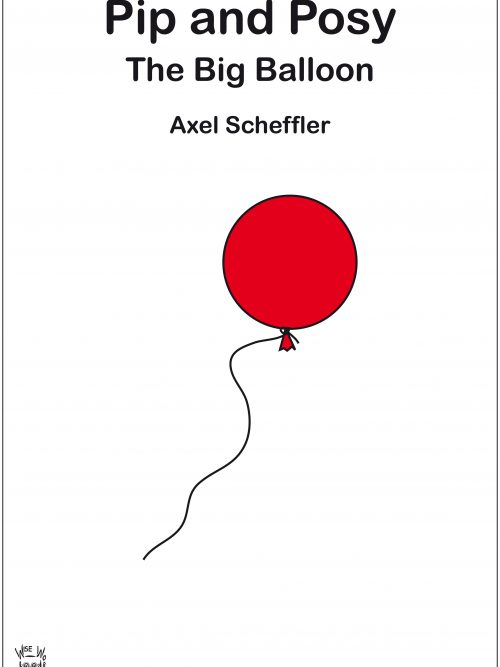 USING BOOKS TO ENHANCE A CHILD'S UNDERSTANDING AND INCREASE HIS/HER EXPRESSIVE LANGUAGE You can use a book to expand a child's • Vocabulary (stool, kennel, basket, sty, reaching, searching) • Understanding of concepts (e.g. big - little, wet - dry, nearly, scary, funny) • Ability to understand questions Wise Words Scripts - offer clinicians, teachers and parents readily available questions designed specifically for each book. A script provides a variety of questions at each level of understanding for each page of the book. A teacher or clinician working with a group of children can tailor questions to each child's language ability. This script and other available scripts have been based on Marion Blank's Model of Classroom Language. Marion Blank recognised the importance of keeping questions and statements within a child’s level of understanding. The more concrete the statement or question, the easier it will be for the child to understand. As questions become more abstract, they become harder for children to answer. The Blank Model is divided into 4 levels of questioning, moving from the concrete (easiest) at Level 1 to the abstract (most difficult) at Level 4.
USING BOOKS TO ENHANCE A CHILD'S UNDERSTANDING AND INCREASE HIS/HER EXPRESSIVE LANGUAGE You can use a book to expand a child's • Vocabulary (stool, kennel, basket, sty, reaching, searching) • Understanding of concepts (e.g. big - little, wet - dry, nearly, scary, funny) • Ability to understand questions Wise Words Scripts - offer clinicians, teachers and parents readily available questions designed specifically for each book. A script provides a variety of questions at each level of understanding for each page of the book. A teacher or clinician working with a group of children can tailor questions to each child's language ability. This script and other available scripts have been based on Marion Blank's Model of Classroom Language. Marion Blank recognised the importance of keeping questions and statements within a child’s level of understanding. The more concrete the statement or question, the easier it will be for the child to understand. As questions become more abstract, they become harder for children to answer. The Blank Model is divided into 4 levels of questioning, moving from the concrete (easiest) at Level 1 to the abstract (most difficult) at Level 4. -
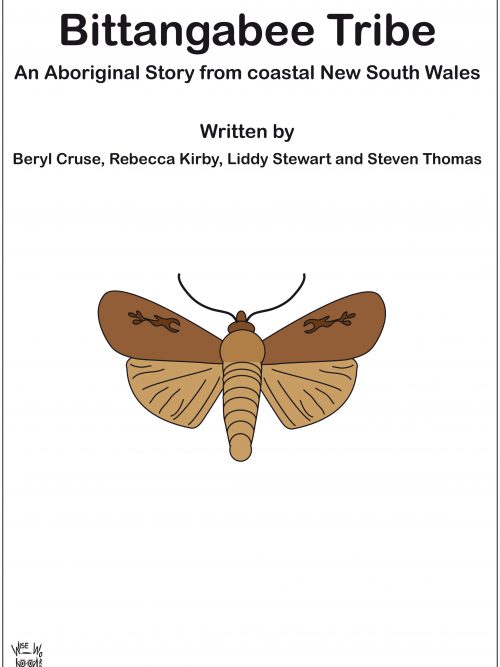 Wise Words indigenous materials have been devised to support parents, teachers and clinicians who may find it challenging to teach indigenous content because of concerns that they may not have the knowledge or understanding to ensure that the books, their stories and the complexity of the information is presented in a respectful and appropriate manner. With thanks to Tara Lewis who kindly edited these resources. Tara Lewis is a Speech Pathologist and member of Speech Pathology Australia's Aboriginal and Torres Strait Islander Advisory Committee. Tara is an Iman woman from the Taroom country of Western Queensland. The Australian Curriculum has established Aboriginal and Torres Strait Islander histories and cultures as a priority. This will ensure that Aboriginal and Torres Strait Islander students are able to see themselves, their identities and their cultures reflected in the curriculum of each of the learning areas. Exposure to these and other indigenous books can build awareness of and respect for Aboriginal and Torres Strait Islander histories and cultures amongst all Australian children. USING BOOKS TO ENHANCE A CHILD'S UNDERSTANDING AND INCREASE HIS/HER EXPRESSIVE LANGUAGE You can use a book to expand a child's • Vocabulary (warrior, coast, oysters, tribes, corroborees, trade, hovering) • Understanding of concepts (e.g. often, wise, great, fresh) • Ability to understand questions Bittangabee Tribe is based around important aspects of traditional Aboriginal life. The book describes the lives of an aboriginal family on the south coast of NSW. The story follows the family on their annual journey into the mountains to meet with other groups and their return to their home near the sea. Wise Words Scripts - offer clinicians, teachers and parents readily available questions designed specifically for each book. A script provides a variety of questions at each level of understanding for each page of the book. A teacher or clinician working with a group of children can tailor questions to each child's language ability. This script and other available scripts have been based on Marion Blank's Model of Classroom Language.
Wise Words indigenous materials have been devised to support parents, teachers and clinicians who may find it challenging to teach indigenous content because of concerns that they may not have the knowledge or understanding to ensure that the books, their stories and the complexity of the information is presented in a respectful and appropriate manner. With thanks to Tara Lewis who kindly edited these resources. Tara Lewis is a Speech Pathologist and member of Speech Pathology Australia's Aboriginal and Torres Strait Islander Advisory Committee. Tara is an Iman woman from the Taroom country of Western Queensland. The Australian Curriculum has established Aboriginal and Torres Strait Islander histories and cultures as a priority. This will ensure that Aboriginal and Torres Strait Islander students are able to see themselves, their identities and their cultures reflected in the curriculum of each of the learning areas. Exposure to these and other indigenous books can build awareness of and respect for Aboriginal and Torres Strait Islander histories and cultures amongst all Australian children. USING BOOKS TO ENHANCE A CHILD'S UNDERSTANDING AND INCREASE HIS/HER EXPRESSIVE LANGUAGE You can use a book to expand a child's • Vocabulary (warrior, coast, oysters, tribes, corroborees, trade, hovering) • Understanding of concepts (e.g. often, wise, great, fresh) • Ability to understand questions Bittangabee Tribe is based around important aspects of traditional Aboriginal life. The book describes the lives of an aboriginal family on the south coast of NSW. The story follows the family on their annual journey into the mountains to meet with other groups and their return to their home near the sea. Wise Words Scripts - offer clinicians, teachers and parents readily available questions designed specifically for each book. A script provides a variety of questions at each level of understanding for each page of the book. A teacher or clinician working with a group of children can tailor questions to each child's language ability. This script and other available scripts have been based on Marion Blank's Model of Classroom Language. -
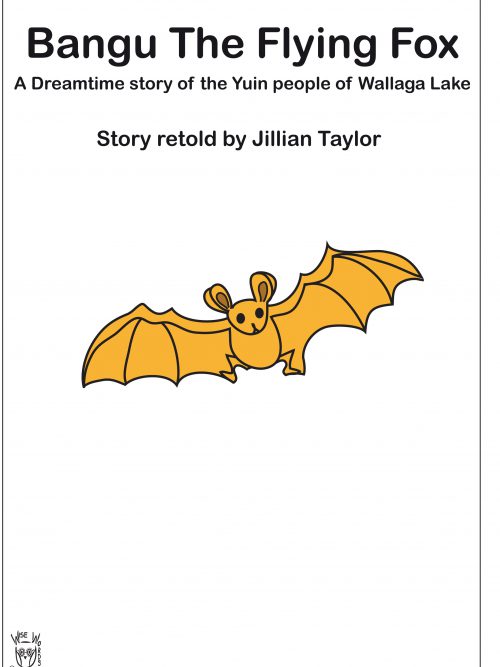 Wise Words indigenous materials have been devised to support parents, teachers and clinicians who may find it challenging to teach indigenous content because of concerns that they may not have the knowledge or understanding to ensure that the books, their stories and the complexity of the information is presented in a respectful and appropriate manner. With thanks to Tara Lewis who kindly edited these resources. Tara Lewis is a Speech Pathologist and member of Speech Pathology Australia's Aboriginal and Torres Strait Islander Advisory Committee. Tara is an Iman woman from the Taroom country of Western Queensland. The Australian Curriculum has established Aboriginal and Torres Strait Islander histories and cultures as a priority. This will ensure that Aboriginal and Torres Strait Islander students are able to see themselves, their identities and their cultures reflected in the curriculum of each of the learning areas. Exposure to these and other indigenous books can build awareness of and respect for Aboriginal and Torres Strait Islander histories and cultures amongst all Australian children. USING BOOKS TO ENHANCE A CHILD'S UNDERSTANDING AND INCREASE HIS/HER EXPRESSIVE LANGUAGE You can use a book to expand a child's • Vocabulary (world, fighting, winning, pretending, crept) • Understanding of concepts (e.g. new, many, frightened, around, lonely) • Ability to understand questions Bangu The Flying Fox details a traditional Dreaming story from the Yuin people of Wallaga Lake. Bangu explores the importance of belonging and identification. Wise Words Scripts - offer clinicians, teachers and parents readily available questions designed specifically for each book. A script provides a variety of questions at each level of understanding for each page of the book. A teacher or clinician working with a group of children can tailor questions to each child's language ability. This script and other available scripts have been based on Marion Blank's Model of Classroom Language.
Wise Words indigenous materials have been devised to support parents, teachers and clinicians who may find it challenging to teach indigenous content because of concerns that they may not have the knowledge or understanding to ensure that the books, their stories and the complexity of the information is presented in a respectful and appropriate manner. With thanks to Tara Lewis who kindly edited these resources. Tara Lewis is a Speech Pathologist and member of Speech Pathology Australia's Aboriginal and Torres Strait Islander Advisory Committee. Tara is an Iman woman from the Taroom country of Western Queensland. The Australian Curriculum has established Aboriginal and Torres Strait Islander histories and cultures as a priority. This will ensure that Aboriginal and Torres Strait Islander students are able to see themselves, their identities and their cultures reflected in the curriculum of each of the learning areas. Exposure to these and other indigenous books can build awareness of and respect for Aboriginal and Torres Strait Islander histories and cultures amongst all Australian children. USING BOOKS TO ENHANCE A CHILD'S UNDERSTANDING AND INCREASE HIS/HER EXPRESSIVE LANGUAGE You can use a book to expand a child's • Vocabulary (world, fighting, winning, pretending, crept) • Understanding of concepts (e.g. new, many, frightened, around, lonely) • Ability to understand questions Bangu The Flying Fox details a traditional Dreaming story from the Yuin people of Wallaga Lake. Bangu explores the importance of belonging and identification. Wise Words Scripts - offer clinicians, teachers and parents readily available questions designed specifically for each book. A script provides a variety of questions at each level of understanding for each page of the book. A teacher or clinician working with a group of children can tailor questions to each child's language ability. This script and other available scripts have been based on Marion Blank's Model of Classroom Language. -
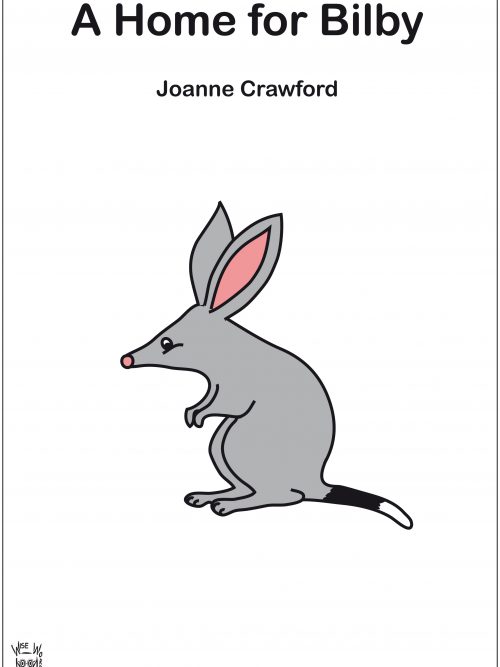 Wise Words indigenous materials have been devised to support parents, teachers and clinicians who may find it challenging to teach indigenous content because of concerns that they may not have the knowledge or understanding to ensure that the books, their stories and the complexity of the information is presented in a respectful and appropriate manner. With thanks to Tara Lewis who kindly edited these resources. Tara Lewis is a Speech Pathologist and member of Speech Pathology Australia's Aboriginal and Torres Strait Islander Advisory Committee. Tara is an Iman woman from the Taroom country of Western Queensland. The Australian Curriculum has established Aboriginal and Torres Strait Islander histories and cultures as a priority. This will ensure that Aboriginal and Torres Strait Islander students are able to see themselves, their identities and their cultures reflected in the curriculum of each of the learning areas. Exposure to these and other indigenous books can build awareness of and respect for Aboriginal and Torres Strait Islander histories and cultures amongst all Australian children. USING BOOKS TO ENHANCE A CHILD'S UNDERSTANDING AND INCREASE HIS/HER EXPRESSIVE LANGUAGE You can use a book to expand a child's • Vocabulary (gum tree, eucalyptus, ambled, burrow, stream) • Understanding of concepts (e.g. busy, quietly, frightened, impatiently, huffy) • Ability to understand questions A Home for Bilby describes the Australian bush and the habitats of the animals that live there. As the animals describe their daily lives and habitats, they develop sympathy for Bilby and help him find a home which is just right for him. Wise Words Scripts - offer clinicians, teachers and parents readily available questions designed specifically for each book. A script provides a variety of questions at each level of understanding for each page of the book. A teacher or clinician working with a group of children can tailor questions to each child's language ability. This script and other available scripts have been based on Marion Blank's Model of Classroom Language.
Wise Words indigenous materials have been devised to support parents, teachers and clinicians who may find it challenging to teach indigenous content because of concerns that they may not have the knowledge or understanding to ensure that the books, their stories and the complexity of the information is presented in a respectful and appropriate manner. With thanks to Tara Lewis who kindly edited these resources. Tara Lewis is a Speech Pathologist and member of Speech Pathology Australia's Aboriginal and Torres Strait Islander Advisory Committee. Tara is an Iman woman from the Taroom country of Western Queensland. The Australian Curriculum has established Aboriginal and Torres Strait Islander histories and cultures as a priority. This will ensure that Aboriginal and Torres Strait Islander students are able to see themselves, their identities and their cultures reflected in the curriculum of each of the learning areas. Exposure to these and other indigenous books can build awareness of and respect for Aboriginal and Torres Strait Islander histories and cultures amongst all Australian children. USING BOOKS TO ENHANCE A CHILD'S UNDERSTANDING AND INCREASE HIS/HER EXPRESSIVE LANGUAGE You can use a book to expand a child's • Vocabulary (gum tree, eucalyptus, ambled, burrow, stream) • Understanding of concepts (e.g. busy, quietly, frightened, impatiently, huffy) • Ability to understand questions A Home for Bilby describes the Australian bush and the habitats of the animals that live there. As the animals describe their daily lives and habitats, they develop sympathy for Bilby and help him find a home which is just right for him. Wise Words Scripts - offer clinicians, teachers and parents readily available questions designed specifically for each book. A script provides a variety of questions at each level of understanding for each page of the book. A teacher or clinician working with a group of children can tailor questions to each child's language ability. This script and other available scripts have been based on Marion Blank's Model of Classroom Language. -
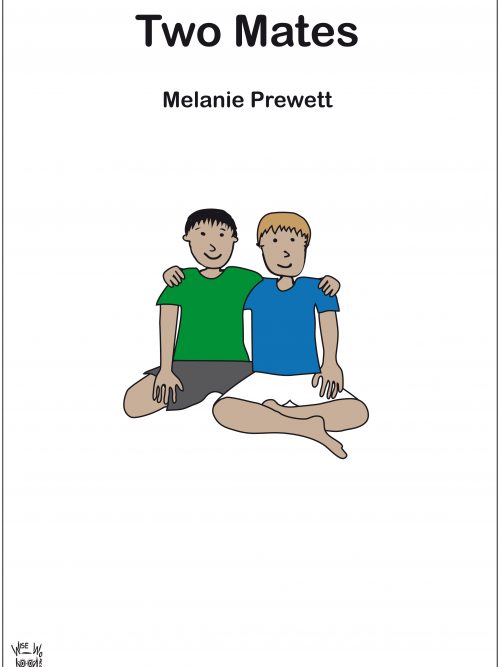 Wise Words indigenous materials have been devised to support parents, teachers and clinicians who may find it challenging to teach indigenous content because of concerns that they may not have the knowledge or understanding to ensure that the books, their stories and the complexity of the information is presented in a respectful and appropriate manner. With thanks to Tara Lewis who kindly edited these resources. Tara Lewis is a Speech Pathologist and member of Speech Pathology Australia's Aboriginal and Torres Strait Islander Advisory Committee. Tara is an Iman woman from the Taroom country of Western Queensland. The Australian Curriculum has established Aboriginal and Torres Strait Islander histories and cultures as a priority. This will ensure that Aboriginal and Torres Strait Islander students are able to see themselves, their identities and their cultures reflected in the curriculum of each of the learning areas. Exposure to these and other indigenous books can build awareness of and respect for Aboriginal and Torres Strait Islander histories and cultures amongst all Australian children. USING BOOKS TO ENHANCE A CHILD'S UNDERSTANDING AND INCREASE HIS/HER EXPRESSIVE LANGUAGE You can use a book to expand a child's • Vocabulary (galaxy, mudskippers, feathers, tide, goanna) • Understanding of concepts (e.g. lucky, fresh, silly, first) • Ability to understand questions Two Mates is the true story of the special friendship between two young boys who have grown up together in the coastal town of Broome in Australia's north-west. The book describes their lives and how each boy recognises the special talents of each other. Jack is Aboriginal and Raf is a non-Aboriginal boy who has spina bifida. Wise Words Scripts - offer clinicians, teachers and parents readily available questions designed specifically for each book. A script provides a variety of questions at each level of understanding for each page of the book. A teacher or clinician working with a group of children can tailor questions to each child's language ability. This script and other available scripts have been based on Marion Blank's Model of Classroom Language.
Wise Words indigenous materials have been devised to support parents, teachers and clinicians who may find it challenging to teach indigenous content because of concerns that they may not have the knowledge or understanding to ensure that the books, their stories and the complexity of the information is presented in a respectful and appropriate manner. With thanks to Tara Lewis who kindly edited these resources. Tara Lewis is a Speech Pathologist and member of Speech Pathology Australia's Aboriginal and Torres Strait Islander Advisory Committee. Tara is an Iman woman from the Taroom country of Western Queensland. The Australian Curriculum has established Aboriginal and Torres Strait Islander histories and cultures as a priority. This will ensure that Aboriginal and Torres Strait Islander students are able to see themselves, their identities and their cultures reflected in the curriculum of each of the learning areas. Exposure to these and other indigenous books can build awareness of and respect for Aboriginal and Torres Strait Islander histories and cultures amongst all Australian children. USING BOOKS TO ENHANCE A CHILD'S UNDERSTANDING AND INCREASE HIS/HER EXPRESSIVE LANGUAGE You can use a book to expand a child's • Vocabulary (galaxy, mudskippers, feathers, tide, goanna) • Understanding of concepts (e.g. lucky, fresh, silly, first) • Ability to understand questions Two Mates is the true story of the special friendship between two young boys who have grown up together in the coastal town of Broome in Australia's north-west. The book describes their lives and how each boy recognises the special talents of each other. Jack is Aboriginal and Raf is a non-Aboriginal boy who has spina bifida. Wise Words Scripts - offer clinicians, teachers and parents readily available questions designed specifically for each book. A script provides a variety of questions at each level of understanding for each page of the book. A teacher or clinician working with a group of children can tailor questions to each child's language ability. This script and other available scripts have been based on Marion Blank's Model of Classroom Language. -
Sale!
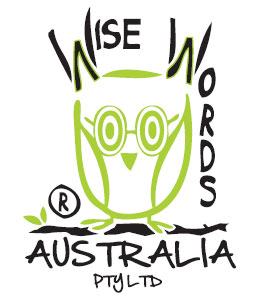 10% Discount Applied to Total Package (See individual programs for details and examples.) The Total Articulation Package includes 13 Articulation Programs. This consists of 6 consonant and 4 vowel programs. Consonant - 'L' Consonant - 'th' voiceless Consonant - 'th' voiced Consonant - 'r' Consonant - 's' Consonant - Minimal Pairs - 'k' vs 't' Consonant - Minimal Pairs - 'sh' vs 's' Consonant - Minimal Pairs - 'ch' vs 't' Vowel - 'ir' Vowel - 'air' Vowel - 'eh' Vowel - Minimal Pairs - 'ir' vs 'or' Wise Words Articulation Programs support clinicians, teachers and parents to establish 'new' (correct) sounds into their child's speech. Each program supplies detailed instructions for every task and game. The instructions have been written in a clear manner for a non-professional to follow. Numerous games are provided. These games have been designed to be fun and interactive and will ensure that the child remains engaged and compliant. Playing the games will help the child to generalise the ‘new’ sound into their everyday speech.
10% Discount Applied to Total Package (See individual programs for details and examples.) The Total Articulation Package includes 13 Articulation Programs. This consists of 6 consonant and 4 vowel programs. Consonant - 'L' Consonant - 'th' voiceless Consonant - 'th' voiced Consonant - 'r' Consonant - 's' Consonant - Minimal Pairs - 'k' vs 't' Consonant - Minimal Pairs - 'sh' vs 's' Consonant - Minimal Pairs - 'ch' vs 't' Vowel - 'ir' Vowel - 'air' Vowel - 'eh' Vowel - Minimal Pairs - 'ir' vs 'or' Wise Words Articulation Programs support clinicians, teachers and parents to establish 'new' (correct) sounds into their child's speech. Each program supplies detailed instructions for every task and game. The instructions have been written in a clear manner for a non-professional to follow. Numerous games are provided. These games have been designed to be fun and interactive and will ensure that the child remains engaged and compliant. Playing the games will help the child to generalise the ‘new’ sound into their everyday speech. -
Sale!
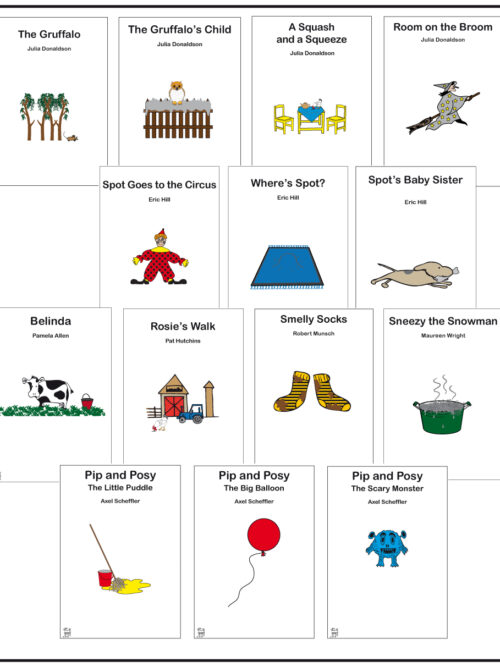 10% Discount Applied to Total Scripts Package (See individual programs for details and examples.) The Total Scripts Package includes 31 scripts: Sneezy the Snowman Rosie's Walk Smelly Socks Belinda The Gruffalo The Gruffalo's Child Stick Man The Smartest Giant in Town Room on the Broom A Squash and a Squeeze Pip & Posy - The Little Puddle Pip & Posy - The Friendly Snail Pip & Posy - The New Friend Pip & Posy - The Christmas Tree Pip & Posy - The Scary Monster Pip & Posy - The Bedtime Frog Pip & Posy - The Big Balloon Pip & Posy - The Snowy Day Pip & Posy - The Super Scooter Where's Spot? Spot Goes to the Park Spot Bakes a Cake Spot Goes to the Circus Spot Goes to School Spot Goes to a Party Spot Goes to the Farm Spot's Birthday Party Spot Visits his Grandparents Spot's Baby Sister Spot Stay's Overnight Spot Goes on Holiday Spot's First Easter USING BOOKS TO HELP YOUR CHILD UNDERSTAND QUESTIONS You can use books to expand your child's • Vocabulary (branch, shivered, paddock, melt, disguise, wind, poisonous, squelchy) • Understanding of concepts (warm, favourite, enormous, kind ) • Ability to understand questions Wise Words Scripts - offer clinicians, teachers and parents readily available questions designed specifically for each book. These scripts have been based on Marion Blank's Model of Classroom Language. Marion Blank recognised the importance of keeping questions and statements within a child’s level of understanding. The more concrete the statement or question, the easier it will be for the child to understand. As questions become more abstract, they become harder for children to answer. The Blank Model is divided into 4 levels of questioning, moving from the concrete (easiest) at Level 1 to the abstract (most difficult) at Level 4.
10% Discount Applied to Total Scripts Package (See individual programs for details and examples.) The Total Scripts Package includes 31 scripts: Sneezy the Snowman Rosie's Walk Smelly Socks Belinda The Gruffalo The Gruffalo's Child Stick Man The Smartest Giant in Town Room on the Broom A Squash and a Squeeze Pip & Posy - The Little Puddle Pip & Posy - The Friendly Snail Pip & Posy - The New Friend Pip & Posy - The Christmas Tree Pip & Posy - The Scary Monster Pip & Posy - The Bedtime Frog Pip & Posy - The Big Balloon Pip & Posy - The Snowy Day Pip & Posy - The Super Scooter Where's Spot? Spot Goes to the Park Spot Bakes a Cake Spot Goes to the Circus Spot Goes to School Spot Goes to a Party Spot Goes to the Farm Spot's Birthday Party Spot Visits his Grandparents Spot's Baby Sister Spot Stay's Overnight Spot Goes on Holiday Spot's First Easter USING BOOKS TO HELP YOUR CHILD UNDERSTAND QUESTIONS You can use books to expand your child's • Vocabulary (branch, shivered, paddock, melt, disguise, wind, poisonous, squelchy) • Understanding of concepts (warm, favourite, enormous, kind ) • Ability to understand questions Wise Words Scripts - offer clinicians, teachers and parents readily available questions designed specifically for each book. These scripts have been based on Marion Blank's Model of Classroom Language. Marion Blank recognised the importance of keeping questions and statements within a child’s level of understanding. The more concrete the statement or question, the easier it will be for the child to understand. As questions become more abstract, they become harder for children to answer. The Blank Model is divided into 4 levels of questioning, moving from the concrete (easiest) at Level 1 to the abstract (most difficult) at Level 4. -
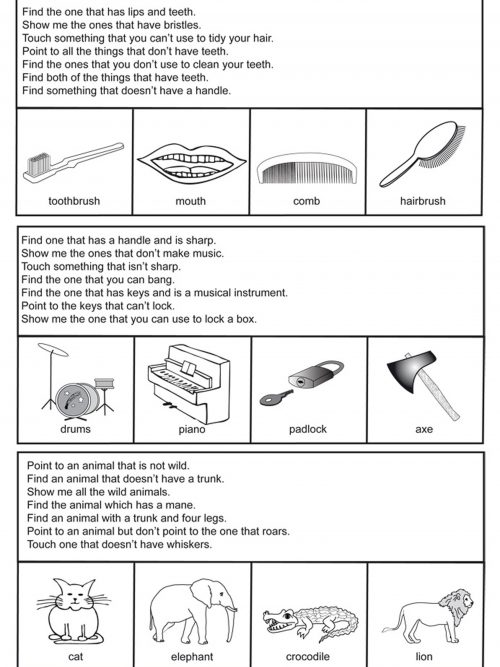
Level 3
Selecting an Object by Exclusion “Find something that is not …” “Tell me something that can’t ....” “Show me something that won’t ...” Citing an Example by Excluding a Class of Objects “Tell me something that grows but isn’t a plant.” “Show me something that belongs in the zoo but isn’t a tiger. “Find a food that is not a vegetable.” Citing an Example by Excluding a Specific Object “Name something that can jump but is not a horse.” “Find something that has leaves but isn’t a tree.” “Show me something that shines but isn’t a torch.” Selecting a Set of Objects by Exclusion “Show me the things that aren’t ...” “Point to the ones that don’t have wheels ...” “Find the food that isn’t ...” The worksheets in this program have been designed to help your child understand negative statements and the concept of exclusion. By working through this program, you will help your child understand that the presence of a negative in a statement generally means that the opposite is true (e.g. “The sky isn’t blue.”). Each page has three components. If your child becomes distracted easily, you should cover two thirds of the page to maintain his focus on the targeted item. Statements and instructions which target exclusion will require your child to overcome the urge to respond to a key word or salient perceptual material. Commonly used negatives are: “not, can’t, don’t, won’t, isn’t, hasn’t, doesn’t”. An additional benefit from working through these activities, is the chance to increase your child’s vocabulary. To achieve this, it is important for you to encourage your child to describe or name each picture. If your child does recognise a picture but does not know a word, you should point to the picture and say the word for him whilst encouraging him to copy what you say. -
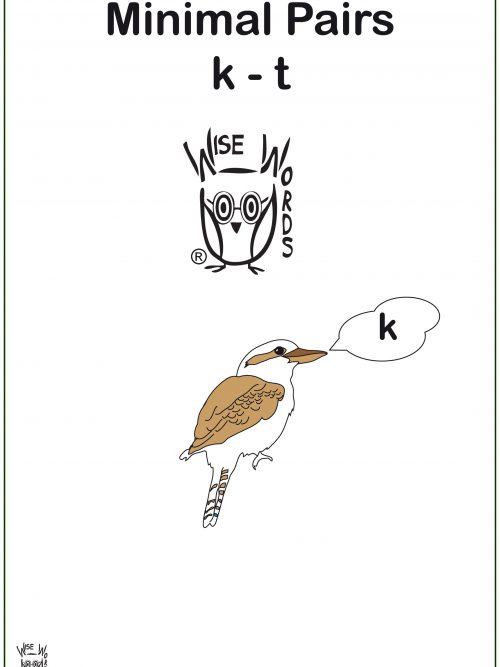 Using Contrastive Pairs Although many children may progress quickly through a regular articulation program, some respond better using a phonological approach. This program uses the contrastive phonological approach of Minimal Pairs. The use of Minimal Pairs is supported by evidence-based practice and has been shown to be an effective and efficient treatment for contrasting vowels or consonants. Once the ‘k’ sound has been established in single, meaningful words, this program can be used. It will help your child hear and use the sound correctly to affect a change in meaning. Although your child is generally able to identify your ‘k’ productions, he may use the error sound ‘t’ for any ‘k’ words. e.g. He may say ... ‘tea’ when he means to say ‘key’ ‘luttee’ when he means to say ‘lucky’ ‘beat’ when he means to say ‘beak’ As he says the words, he may not recognise that he is using an incorrect sound. These sound errors can affect his intelligibility and will change the meaning in his connected speech.
Using Contrastive Pairs Although many children may progress quickly through a regular articulation program, some respond better using a phonological approach. This program uses the contrastive phonological approach of Minimal Pairs. The use of Minimal Pairs is supported by evidence-based practice and has been shown to be an effective and efficient treatment for contrasting vowels or consonants. Once the ‘k’ sound has been established in single, meaningful words, this program can be used. It will help your child hear and use the sound correctly to affect a change in meaning. Although your child is generally able to identify your ‘k’ productions, he may use the error sound ‘t’ for any ‘k’ words. e.g. He may say ... ‘tea’ when he means to say ‘key’ ‘luttee’ when he means to say ‘lucky’ ‘beat’ when he means to say ‘beak’ As he says the words, he may not recognise that he is using an incorrect sound. These sound errors can affect his intelligibility and will change the meaning in his connected speech. -
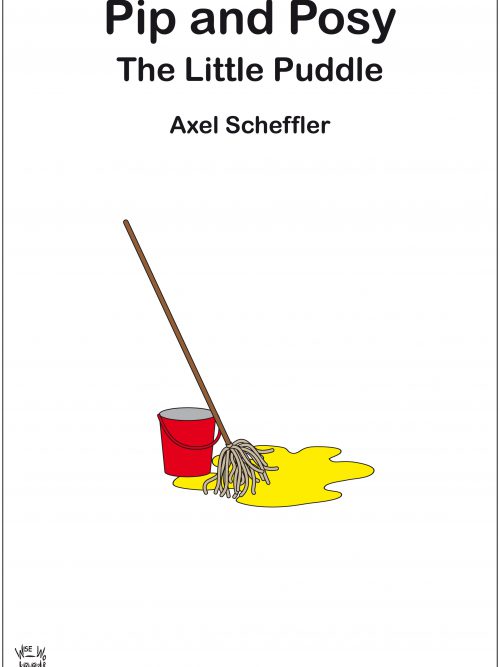 USING BOOKS TO ENHANCE A CHILD'S UNDERSTANDING AND INCREASE HIS/HER EXPRESSIVE LANGUAGE You can use a book to expand a child's • Vocabulary (magnificent, sail, squelchy, sniffing, pretending) • Understanding of concepts (e.g. cold, round, white, cosy, kind, sometimes) • Ability to understand questions Wise Words Scripts - offer clinicians, teachers and parents readily available questions designed specifically for each book. A script provides a variety of questions at each level of understanding for each page of the book. A teacher or clinician working with a group of children can tailor questions to each child's language ability. This script and other available scripts have been based on Marion Blank's Model of Classroom Language. Marion Blank recognised the importance of keeping questions and statements within a child’s level of understanding. The more concrete the statement or question, the easier it will be for the child to understand. As questions become more abstract, they become harder for children to answer. The Blank Model is divided into 4 levels of questioning, moving from the concrete (easiest) at Level 1 to the abstract (most difficult) at Level 4.
USING BOOKS TO ENHANCE A CHILD'S UNDERSTANDING AND INCREASE HIS/HER EXPRESSIVE LANGUAGE You can use a book to expand a child's • Vocabulary (magnificent, sail, squelchy, sniffing, pretending) • Understanding of concepts (e.g. cold, round, white, cosy, kind, sometimes) • Ability to understand questions Wise Words Scripts - offer clinicians, teachers and parents readily available questions designed specifically for each book. A script provides a variety of questions at each level of understanding for each page of the book. A teacher or clinician working with a group of children can tailor questions to each child's language ability. This script and other available scripts have been based on Marion Blank's Model of Classroom Language. Marion Blank recognised the importance of keeping questions and statements within a child’s level of understanding. The more concrete the statement or question, the easier it will be for the child to understand. As questions become more abstract, they become harder for children to answer. The Blank Model is divided into 4 levels of questioning, moving from the concrete (easiest) at Level 1 to the abstract (most difficult) at Level 4. -
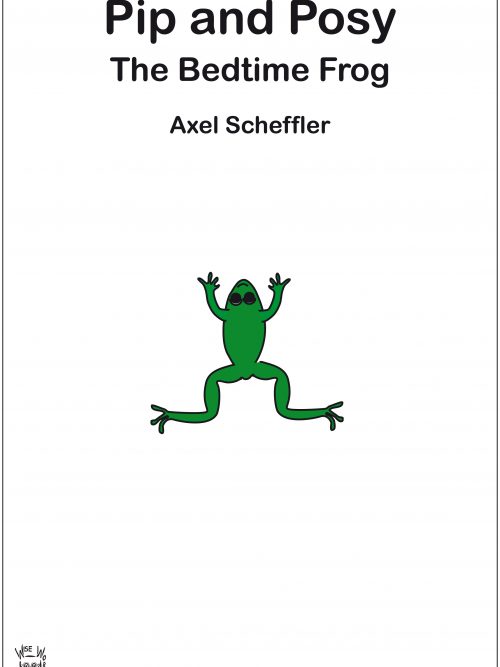 USING BOOKS TO ENHANCE A CHILD'S UNDERSTANDING AND INCREASE HIS/HER EXPRESSIVE LANGUAGE You can use a book to expand a child's • Vocabulary (stool, kennel, basket, sty, reaching, searching) • Understanding of concepts (e.g. big - little, wet - dry, nearly, scary, funny) • Ability to understand questions Wise Words Scripts - offer clinicians, teachers and parents readily available questions designed specifically for each book. A script provides a variety of questions at each level of understanding for each page of the book. A teacher or clinician working with a group of children can tailor questions to each child's language ability. This script and other available scripts have been based on Marion Blank's Model of Classroom Language. Marion Blank recognised the importance of keeping questions and statements within a child’s level of understanding. The more concrete the statement or question, the easier it will be for the child to understand. As questions become more abstract, they become harder for children to answer. The Blank Model is divided into 4 levels of questioning, moving from the concrete (easiest) at Level 1 to the abstract (most difficult) at Level 4.
USING BOOKS TO ENHANCE A CHILD'S UNDERSTANDING AND INCREASE HIS/HER EXPRESSIVE LANGUAGE You can use a book to expand a child's • Vocabulary (stool, kennel, basket, sty, reaching, searching) • Understanding of concepts (e.g. big - little, wet - dry, nearly, scary, funny) • Ability to understand questions Wise Words Scripts - offer clinicians, teachers and parents readily available questions designed specifically for each book. A script provides a variety of questions at each level of understanding for each page of the book. A teacher or clinician working with a group of children can tailor questions to each child's language ability. This script and other available scripts have been based on Marion Blank's Model of Classroom Language. Marion Blank recognised the importance of keeping questions and statements within a child’s level of understanding. The more concrete the statement or question, the easier it will be for the child to understand. As questions become more abstract, they become harder for children to answer. The Blank Model is divided into 4 levels of questioning, moving from the concrete (easiest) at Level 1 to the abstract (most difficult) at Level 4. -
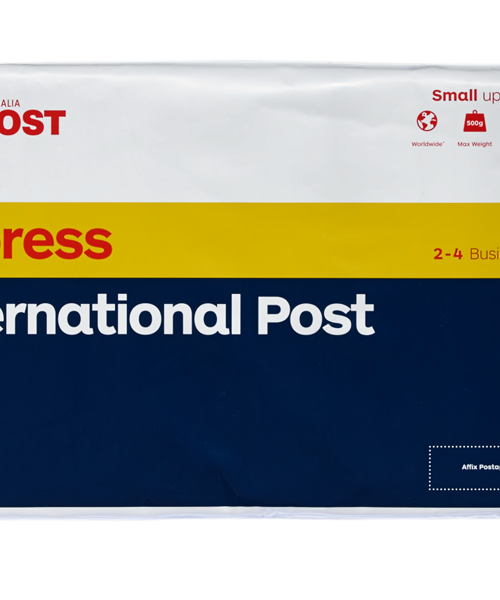 Shipping - International Express Post $55.00 guarantees delivery in 2 to 4 business days to metro areas of major international cities. Although Australia Post Airmail Service guarantees reliable delivery to over 200 countries, customs procedures in other countries have been known to delay the delivery of packages.
Shipping - International Express Post $55.00 guarantees delivery in 2 to 4 business days to metro areas of major international cities. Although Australia Post Airmail Service guarantees reliable delivery to over 200 countries, customs procedures in other countries have been known to delay the delivery of packages. -
 Domestic Express Post Express post guarantees next business day delivery if a delivery address is within the Express Post network on a business day (Monday to Friday). This covers 80% of Australian business addresses, private addresses and Post Office Boxes. The service operates between all capital cities (except Darwin and in Perth CBD only) and some major centres. If the address is outside Express Post network, it will be sent via the fastest possible transport links, but it won't be delivered by the next day. Although Australia Post Airmail Service guarantees reliable delivery to over 200 countries, customs procedures in other countries have been known to delay the delivery of packages.
Domestic Express Post Express post guarantees next business day delivery if a delivery address is within the Express Post network on a business day (Monday to Friday). This covers 80% of Australian business addresses, private addresses and Post Office Boxes. The service operates between all capital cities (except Darwin and in Perth CBD only) and some major centres. If the address is outside Express Post network, it will be sent via the fastest possible transport links, but it won't be delivered by the next day. Although Australia Post Airmail Service guarantees reliable delivery to over 200 countries, customs procedures in other countries have been known to delay the delivery of packages. -
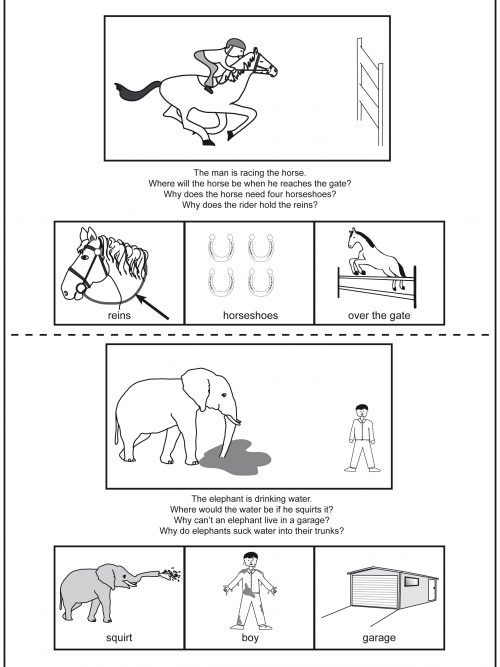
Level 4
Predicting changes in position “What will you see if ...?” “Where will the ... be if ...?” Explaining the means to a goal “Why did the ...?” “Why should he ...?” Explaining obstacles to an action “Why can’t the helicopter ...?” “Why won’t the ...?” This program can be used with both readers and non-readers alike. If a child can read, it is suggested that the ‘without words’ version is used to avoid reliance on the written prompt. Parents or carers have access to the written label in order to guide their child with each task. It is important for the parent, teacher or clinician to lead the child towards the salient features of the presented information. Point to a picture, parts of a picture or break down the statements into simple content in order to give the child an opportunity to understand. If your child appears to be struggling with the questions, it is essential to talk more but at a simple level of understanding so that the child reaches the appropriate response by himself. Rephrasing the information will ensure that he is able to draw on past experiences or make inferences. This should help him to understand the question and then offer a solution. -
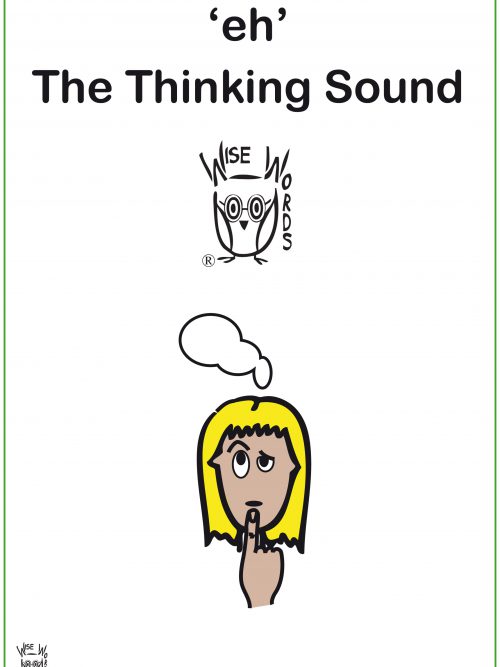
'The Thinking Sound'
Wise Words Articulation Programs - support clinicians, teachers and parents to establish 'new' (correct) sounds into their child's speech. Each program supplies detailed instructions for every task and game. The instructions have been written in a clear manner for a non-professional to follow. Numerous games are provided. These games have been designed to be fun and interactive and will ensure that the child remains engaged and compliant. Playing the games will help the child to generalise the ‘new’ sound into their everyday speech.

